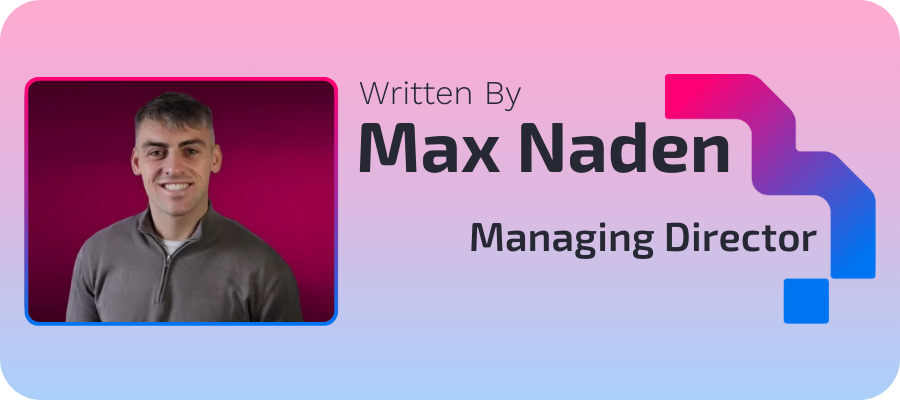
able of Contents
Google says nofollow links don’t pass authority – “They’re not part of Google’s ranking algorithm.” But if you’ve been in SEO longer than five minutes, and actually look at the data, you might be a little hesitant to take that at face value.
Google still values authority, and a big part of that is who you’re associated with. So if a nofollow link comes from a well-known site with strong signals, it’s hard to believe there’s no benefit at all.
And let’s be honest, how many of us are chasing links from high-authority news sites or top-tier directories, only to find they slap a nofollow on everything? Are we really saying that getting closer to the seed sites Google loves is a waste of time just because there’s a “nofollow” in the code? If that’s true, then a massive chunk of link building is just a waste of time.
So, do nofollow links pass juice?… Officially? No.
But in practice? We think yes. Here’s why.
In 2005, Google introduced rel=”nofollow” to combat spammy blog comments. It told bots: “Don’t follow this link. Don’t count it in your ranking maths.”
In 2009, they changed how PageRank was handled behind the scenes. Even nofollow links started to eat into the PageRank pool of a page, they just didn’t “pass” it.
Then in 2020, Google quietly shifted their stance, nofollow became a “hint.”, not a directive or a roadblock but a suggestion.
As Google’s own blog put it: “Links marked with these rel attributes will be treated as hints about which links to consider or exclude within Search.” Google Search Central
And what does Google do with hints? Whatever they want.
In 2024, over 14,000 internal Google API signals were leaked, confirming what SEOs have long suspected: Google tracks everything.
According to Mike King’s analysis of the documents, “There’s a feature called siteAuthority. There are multiple references to link quality and source reliability. Nowhere do we see ‘nofollow’ means ignore.” AIOSEO
Add in NavBoost, Google’s behavioural engine that tracks clicks and user actions via Chrome, and it’s clear: Google’s watching how people interact with links, not just whether they exist. Boomcycle
If the leak tells us anything, it’s that Google doesn’t need to “follow” a link to measure what it does.
You don’t have to take Google’s word or ours. Let’s look at what actually happened when SEOs tested nofollow links:
1. SEMrush / Adam White Test: Adam White ran a test where a page ranked #19 moved to #1 in under a week, powered entirely by nofollow backlinks. As he put it: “I used only nofollow links with rich anchor text and saw a drastic improvement. That was the only variable.” SEO.co
2. TekNicks Case Study: In a long-term campaign, TekNicks built a backlink profile that was 89% nofollow, and still drove a 288% increase in organic traffic. Their conclusion? “Google is using nofollow links in its algorithm… whether they admit it or not.” TekNicks
3. IMEC Lab Experiments: SEO Sherpa’s team ran a controlled experiment: “We pointed nofollow links at a page from 42–55 unique domains. It gained between 4–10 positions. When we removed those links, rankings dropped.” SEO Sherpa
That’s not a coincidence, that’s a signal.
So What’s Really Going On?
We think Google’s trying to have it both ways. Publicly: nofollow is a trust barrier. Privately: it’s a data point.
As Arc Intermedia put it when analysing the leaked ranking factors: “Click data, dwell time, and site engagement are being tracked, and linked back to the originating click. Even if that click came from a nofollow source.” Arc Intermedia
So if a nofollow link sends traffic, and that traffic behaves well? Google sees that, and it reacts.
Before we get too wrapped up in high-authority tests and leak data, let’s zoom in on something much closer to home… citations.
We already know citations hold value in local SEO. Even when those links are nofollow, they’re crucial for building trust and consistency, especially in Google’s local ranking algorithms. As Google’s own documentation on local ranking factors says, “Consistency of NAP (Name, Address, Phone number) across directories helps establish the legitimacy of a business.” It’s less about passing traditional link equity and more about reinforcing identity and trust.
These links don’t drive traffic. They rarely get clicks. And yet, without them you don’t show up in the map pack.
So if Google clearly values nofollow links in one part of the algorithm, enough to base local presence on them, why wouldn’t that thinking bleed over into the rest of the algorithm? It’s the same principle: credible sources vouching for your existence.
Which means nofollow isn’t just a “do not index” sign, it’s context, trust & relevance.
This isn’t just a technical debate about attributes in code, it’s a mindset shift. Too many SEOs are still acting like nofollow links are dead weight. But the evidence, the leaks, the tests and the behaviour data, all points to something of a different conclusion. Nofollow links are part of the bigger picture. They shape trust. They influence engagement. They echo through your profile.
So this article isn’t just about proving a point, it’s about changing how you value links. Stop binning them because of a label. Start asking what they do, not what they’re called. If you shift your approach here, you’ll unlock wins your competitors are still too proud, or too lazy, to chase.
Don’t throw nofollow links in the bin. Use them smartly:
Use nofollow links like stealth operatives. They don’t shout, but they still move the needle.
So, do nofollow links pass juice?
Not in the traditional PageRank sense. But through a messy cocktail of anchor signals, behavioural metrics, and link profiling. If Google’s crawler is tracking, if Chrome is watching, if experiments show rankings rise and fall based on nofollow activity, then we’ve got enough smoke to call it fire.
Google’s not telling the full truth. But the data is.
